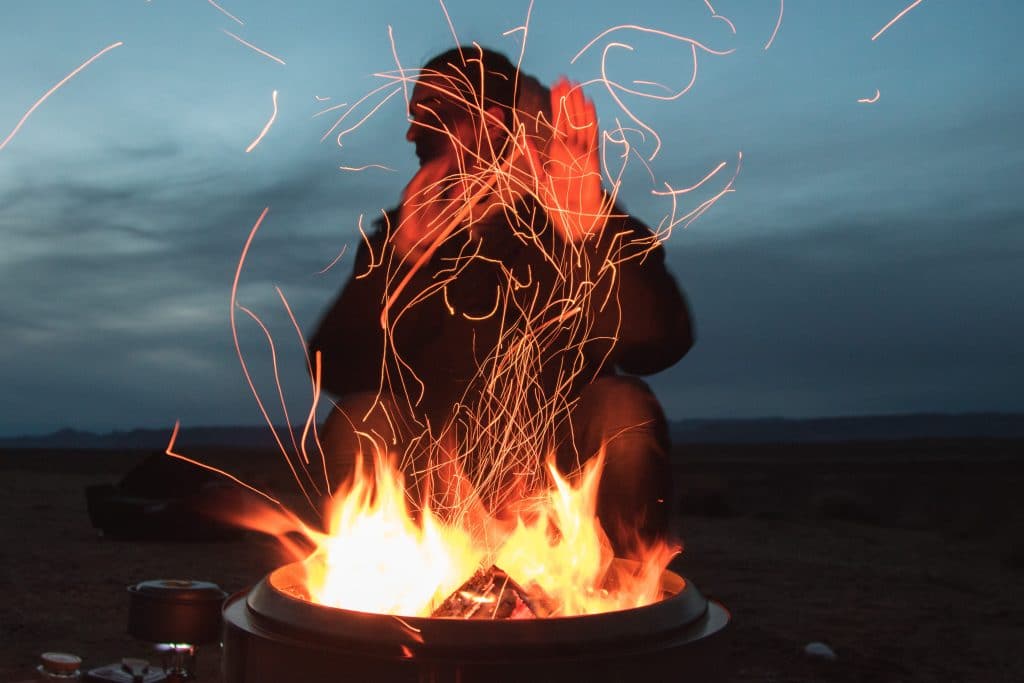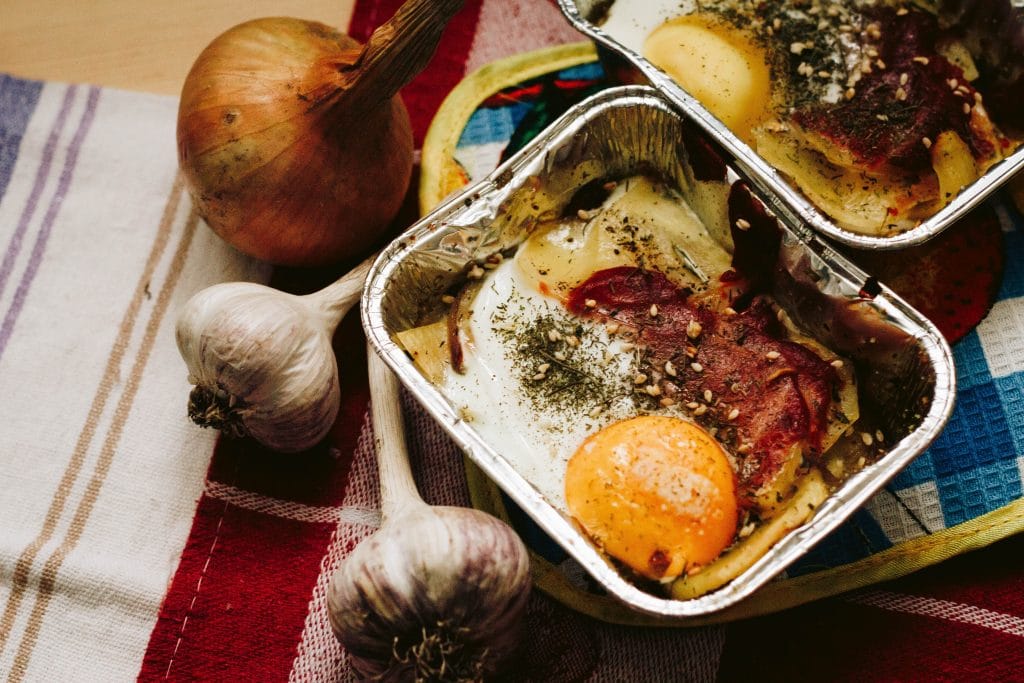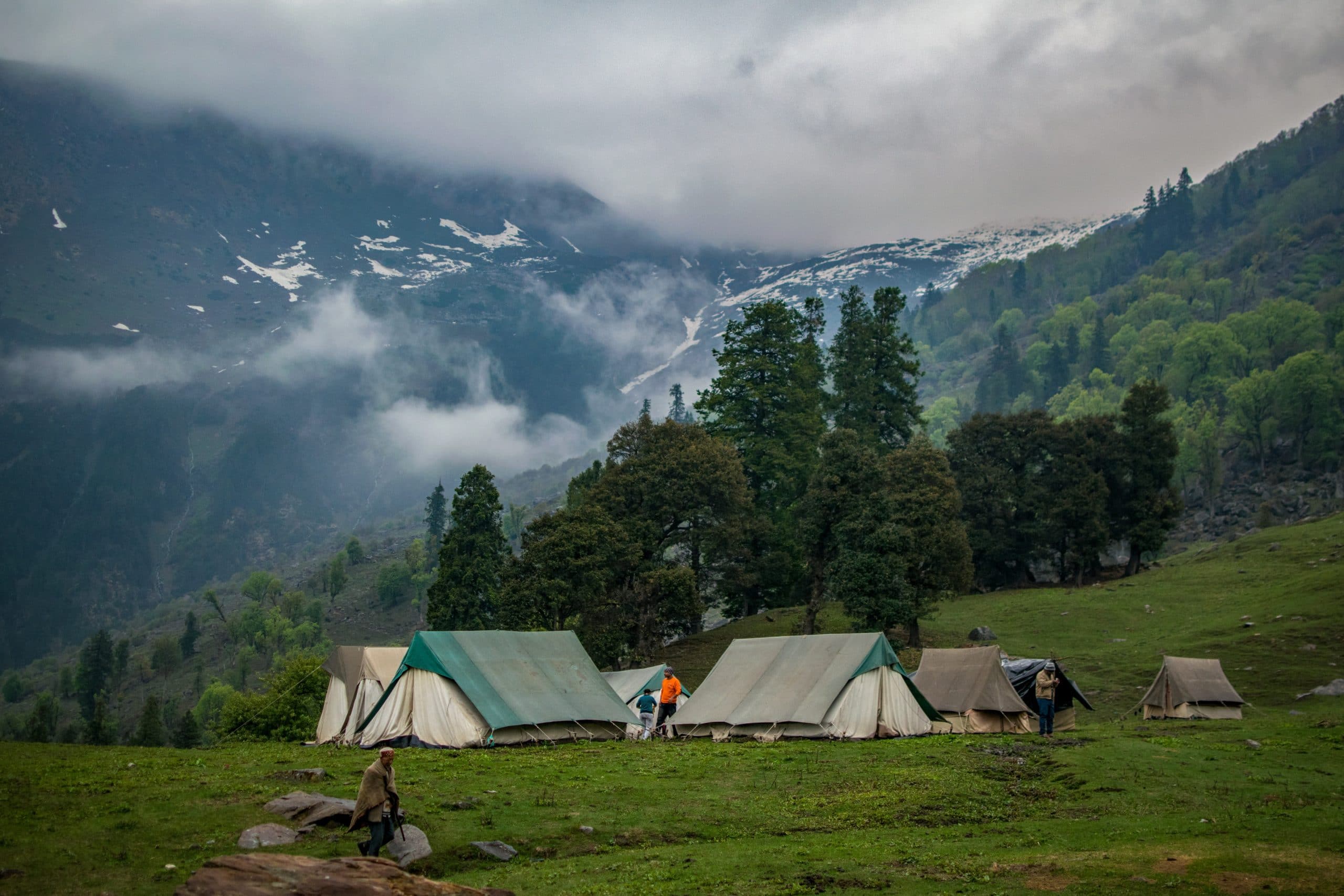Cooking in the great outdoors can be an adventure in and of itself.
But just because you’re in the great outdoors doesn’t mean you can’t cook up a tasty meal that’s a little more complex than a hot dog and a couple of ears of corn over the campfire. You’ll be able to put out the fire in no time with the help of a few useful kitchen tools and a little bit of knowledge.
How to Deal with the Heat

There is no “set oven to 350 degrees F and timer for 30 minutes” with a campfire, unlike cooking in your kitchen. This fundamental form of cooking, on the other hand, necessitates gauging and controlling the level of heat. This can be accomplished by creating two fires, one for cooking and one to create a source of coals.
“Your cooking fire should be a channel of the main fire,” writes Nikki Fotheringham, author of several cookbooks on campfire cooking. You’d transfer the coals from the fire pit to your cooking fire. This enables you to regulate the temperature. It also prevents you from being caught with a dead fire and a half-cooked meal!”
Another pro tip: ashes are an excellent way to control the heat of the embers without completely extinguishing the fire. According to Nico Stanitzok, a chef, food blogger, and co-author of The Campfire Cookbook cover the embers with a shovel of ashes to help reduce some of their intensity.
To check on the heat level, Fotheringham recommends holding your hand 4 inches away from the coals until it gets too hot. Depending when it feels this way will indicate the degree of heat and therefore what would be best to cook. “If your hand feels too hot at the 2–3 seconds mark, this is a hot fire. You can cook steak on this perfectly. If it takes 5–7 seconds, this is medium hot. Bread, puddings, and frying veggies are all done at this temperature,” says Fotheringham.
Plan Your Meals
Try the following recipe: Packs of Campfire Foil

With a little prepping and planning, you can have a delicious meal with the added bonus of some wood smoke flavoring. The less chopping and mixing that needs to happen on-site, the better, as it requires less equipment to be hauled out and reduces the chances of cross-contamination or foodborne illness.
Stews and soups are simple to prepare ahead of time and then cook on the spot. Just make sure to keep the food cold until it’s time to cook it. Aluminum foil is a common household product that we highly recommend. He gave us this simple tip: “Aluminum foil is an excellent choice for preparing delectable food. Take the hot dog sausages and cut them into half-inch pieces. In a mixing bowl, combine a few diced peppers, onions, crumbled feta, and olive oil. Season with salt, pepper, thyme, rosemary, or a combination of the two. Wrap them in aluminum foil and cook them over open flames. It’s like a feast and very simple to prepare.”
The high heat from your campfire can be ideal for producing delectable and unexpected results. Squared-x recommends grilled pizza and even bread, both of which can be made simply in a cast-iron skillet or a Dutch oven. We adore this versatile 12-inch Lodge skillet, which can be used to sauté vegetables, fry pancakes, or make a memorable personal pan pizza. Take that sourdough starter you’ve been working on while on the road and bake it in the coals with this Staub Dutch oven.
Prepare Yourself
Try this breakfast recipe: Campfire Skillet Breakfast.
Remember to bring heat-resistant utensils, in addition, to cast iron cookware, as plastic can melt. A longer pair of tongs can come in handy when flipping steaks and grabbing burgers or sausages.
Maintain food safety by using a cooler packed with both ice and bags of cold water for any meat, dairy, or other items that require refrigeration, as explained by food safety expert Keith Warriner, the water keeps the temperature cooler for longer.
Because of COVID-19, access to park facilities may be limited, so bring bottles of water and soap for washing anything that comes into contact with raw foods, as well as hand sanitizer to help kill any harmful pathogens. Be wary of both large and small outdoor critters, and pack food in tightly sealed containers.
Whatever you enjoy cooking over a campfire, whether it’s a gourmet feast or just a couple of toasted marshmallows, make sure to extinguish all fires before leaving the area and stay safe.
